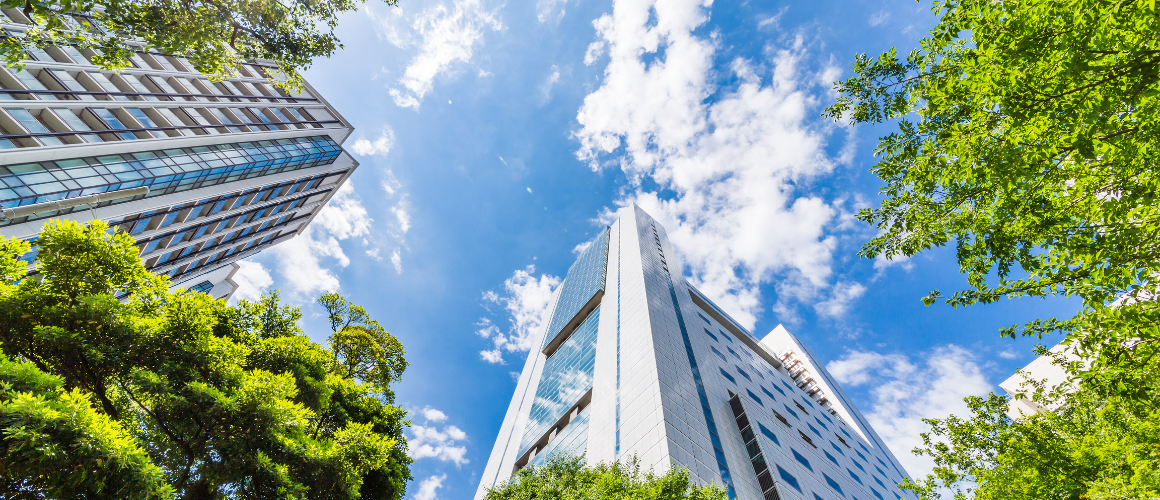
The Green Blueprint: Sustainability in 3D-Printed Architecture
Imagine stepping into a world where buildings spring up from printers. Yes, you read that right—printers! This isn't a scene from a sci-fi movie; it's the reality of architecture today, thanks to 3D printing. This groundbreaking technology is reshaping how we think about designing and constructing spaces, from cozy homes to towering skyscrapers.
3D printing in architecture means we can create more intricate designs and sustainable buildings faster than ever before. It's like having a magic wand that turns digital dreams into concrete (literally) realities. And when we mix this magic with Building Information Modeling (BIM), we unlock even more possibilities. BIM helps us see the future of a building before it even exists, making sure it's not just beautiful but also sturdy and green.
As we dive into the story of 3D printing's evolution in architecture, we're not just talking about the nuts and bolts. We're exploring a revolution that brings luxury, efficiency, and sustainability into our cities and lives. So, let's embark on this exciting journey together and discover how 3D printing and BIM are building the future, one layer at a time.
The journey of 3D printing in architecture is like a rollercoaster that took off in the 1980s. Back then, it was all about small prototypes. Fast forward to today, and we're printing entire buildings. This leap wasn't overnight; it took years of tinkering, testing, and dreaming big.
At first, architects used 3D printing to create mini models of their designs. It was a handy tool, but no one thought we'd go from tiny models to actual houses and offices. However, as technology got better and printers got bigger, the idea of printing full-sized buildings started to seem less like a fantasy.
The real game-changer was when architects realized 3D printing could do more than just create structures; it could revolutionize the entire building process. We're talking about using less material, cutting down waste, and even making buildings more sustainable. Plus, 3D printing lets designers unleash their creativity, turning complex, futuristic designs into reality.
Now, combine 3D printing with BIM, and you've got a powerhouse duo. BIM's digital models help architects plan and predict every detail of a building, from energy usage to how sunlight flows through windows. With 3D printing, those precise plans can be brought to life, layer by layer.
This evolution isn't just about new gadgets and gizmos. It's about making better buildings faster, smarter, and greener. It's a sign that architecture isn't just changing; it's soaring to new heights, powered by the magic of 3D printing and the brains behind BIM. And guess what? We're just getting started. The future is bright, and it's being printed as we speak.

Picture BIM and 3D printing as two friends who bring out the best in each other. BIM, or Building Information Modeling, is like the planner of the group, thinking about every detail of a building before it's even built. 3D printing is the maker, turning those detailed plans into real, tangible buildings. Together, they're a dream team that's changing the game in architecture.
BIM starts the process with its detailed digital models. It thinks about everything: how the building will stand up to wind, how the sun will hit it in the morning, and even how energy efficient it will be. Then, 3D printing takes over, layer by layer, bringing these complex, detailed models to life in the real world.
This synergy between BIM and 3D printing isn't just cool tech—it's a smarter way to build. It cuts down on waste because 3D printing uses only the materials it needs. It's faster, too, because printing a wall can be quicker than traditional building methods. Plus, it opens up new possibilities for design. Architects can now dream up shapes and structures that would have been too complex or too expensive to build in the past.
In a nutshell, BIM and 3D printing together are like a preview of the future of building. They make construction quicker, less wasteful, and way more imaginative. It's a partnership that's not just building buildings; it's building the future.
Luxury in architecture used to be about marble columns, sprawling gardens, and gold leaf everywhere. But today's luxury? It's smart, sustainable, and, yes, printed. 3D printing and BIM are redefining what it means to live in the lap of luxury, making it not just about how homes look but how they function and feel.
With 3D printing, architects can create structures that were once thought impossible. Think of sweeping curves, intricate patterns, and materials that keep your home cool in summer and warm in winter. These aren't just showpieces; they're homes designed to fit your life perfectly, like a tailor-made suit.
BIM adds another layer to this luxury. It ensures that every part of your home, from the way the light dances on your floor to how quietly the air conditioning whispers, is planned to perfection. BIM helps in making homes not just beautiful, but smart. Imagine windows that tint themselves to keep out the heat, walls that store energy, and rooms that adjust their temperature to your liking. That's luxury, redefined.
And let's not forget sustainability. Luxury homes today are as green as they are gorgeous. With BIM and 3D printing, buildings are designed to use less energy, produce less waste, and blend harmoniously with their surroundings. Living in luxury now means living in a home that's not only beautiful and smart but also kind to the planet.

This new definition of luxury isn't just about what's added but what's removed—waste, inefficiency, and the one-size-fits-all approach. In its place, we're building a future where luxury means living in a home that's as unique as you are and as sustainable as the world we hope to leave behind.
As we peek into the future of architecture, it's clear that AI, 3D printing, and sustainability aren't just trends; they're the pillars of a new era. Imagine buildings that not only rise from the ground with the precision and efficiency of 3D printing but also think, thanks to AI. These smart buildings will adapt to their environment, save energy, and even repair themselves.
AI is the brains behind this operation, analyzing data to make buildings more efficient and comfortable. It's about optimizing sunlight for warmth in the winter and shade in the summer, or using rainwater for cooling. AI can predict what a building needs before anyone even asks.
3D printing brings these smart designs to life, crafting homes and offices that are as strong as they are beautiful. It's about using materials that are stronger, lighter, and more sustainable. This technology makes it possible to build faster and reduce waste, changing the very way we think about construction.
And sustainability? It's the heart of it all. The future of architecture isn't just about buildings that stand tall but about creating spaces that breathe with the environment. It's about minimizing the impact on our planet and maximizing comfort for its inhabitants.
Together, AI, 3D printing, and a commitment to sustainability are weaving a future where architecture is more than just buildings. It's about creating spaces that are intelligent, efficient, and, above all, kind to our planet. This is more than the future of architecture; it's the future of how we live, work, and connect with the world around us.
We've journeyed from the first layers of 3D printed prototypes to the smart, sustainable architectural marvels of the future, guided by the synergy of BIM and AI. This evolution in architecture isn't just about buildings; it's about reshaping our world. The future is one where luxury means living in harmony with our planet, where designs are as green as they are grand. Together, 3D printing, BIM, and AI are not just creating structures; they're building a sustainable, efficient, and imaginative world. It's a future we're not just waiting for but actively building, one layer, one byte, and one sustainable choice at a time.